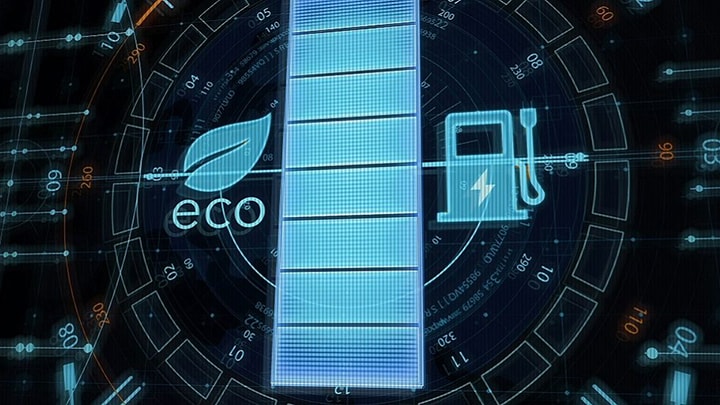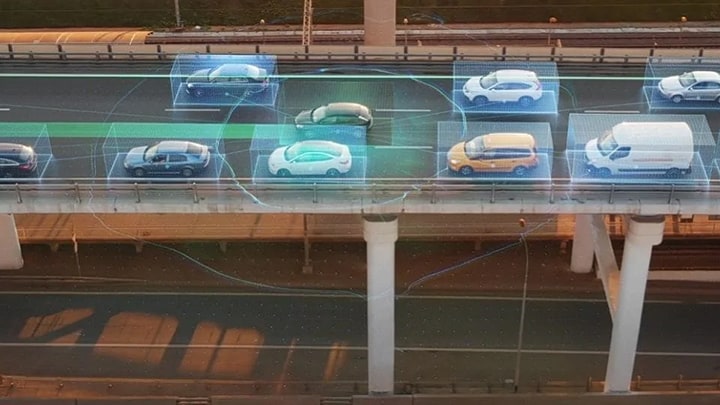Many new cars on the road today are loaded with advanced safety systems that
can “see” what’s around you, exposing blind spots and
nearby hazards. Featuring radar and vision processing technology, these cars
automatically steer and brake you to safety if you’re slow or unable to
react.
But what if you could “see” even further than what’s
nearby, around curves, around other vehicles, through the dense urban
environment and even up to a mile away? With V2X (vehicle-to-everything)
communications, cars can “talk” to other cars, motorcycles,
emergency vehicles, traffic lights, digital road signs and pedestrians, even
if they are not directly within the car’s direct line-of-sight.
 With V2X, your car is alerted of roadway hazards that are impossible to see
in advance.
With V2X, your car is alerted of roadway hazards that are impossible to see
in advance.
V2X makes the invisible visible – and safer
With V2X, your car is alerted to what’s hidden from sight far ahead,
around corners and over hills, detecting and warning you in real-time of other
vehicles, road works, traffic congestion and even people – long before
radar sensors or vision systems would have detected the hazards.
Have you ever driven on a fast-moving curve on a highway, and suddenly found
yourself slamming the brakes to avoid crashing into a glowing sea of red
lights? With V2X, you and your car would have been automatically warned of the
traffic pile up, offering you safety-critical beyond-line-of-sight data that
no other sensor can detect.
A V2X-enabled car can automatically broadcast that its emergency brakes are in
use, setting in motion a warning to other cars in the area to slow down.
V2X also makes intersections safer, smoother and improves traffic flow. Cars
approaching traffic lights receive real-time warnings to slow or speed up
prior to arriving at the intersection. In fact, as cars move towards complete
autonomy, knowing how much time remains before the traffic light turns red is
essential information to guarantee a smooth autonomous driving experience.
V2X alerts can even pinpoint road construction blocks away, see approaching
motorcyclists or other vulnerable road users, and help smooth the way for
approaching emergency vehicles through traffic or complex rural conditions.
Minimum latency for real time messaging required
As two
or more things enabled with V2X come into range, they form an ad-hoc wireless
network based on the DSRC (dedicated short-range communications) 802.11p
standard. Unlike cellular based V2X which requires the assistance of a
network, the DSRC communications allow them to automatically transmit and send
real-time short, dedicated safety-critical messages to each other.
The key is “real-time” messaging. Recently, we announced the
industry’s first scalable, single-chip V2X platform
that can verify more than 2,000 messages per second on-chip. And it operates
over a distance up to a mile, even in areas where cellular network connections
are not available. The technology has been proven to be fast enough to enable
fully autonomous truck or car platoons separated by less than 0.5 seconds. It
has been recently demonstrated by the
EU platooning initiative.
Keep it secure, by design
As with any connected device,
there’s a risk for potential attack by hackers. Connected cars are no
different. That’s why we offer the industry’s highest security
level available in a “security by design” approach to car OEMs.
Our secure V2X RoadLINK® platform features our secure element
technology. It’s the same technology that’s used in the
world’s most sensitive security environments around the world, from
electronic passports, banking cards, smartphones. Secure element technology
demonstrates ultra-high resistance to physical probing and tampering, and is a
natural fit into the connected car.
One world, one platform
Each region comes with its own
slightly different flavor of V2X applications, requiring global OEMs to
develop software to support each market roll out. This is where our
software-defined radio technology comes in handy. To give carmakers a
versatile edge on manufacturing, carmakers can use the same V2X platform
across all of their makes and models worldwide, supporting multiple global
regions. Customization for regional V2X standards is done at the software
level. Viola – one world, one platform!
The DSRC 802.11p and 4G/5G connection
Finally, it is
well known in the industry that there are multiple standards all competing for
a slice of the worldwide V2X market. Not only DSRC / 802.11p, but also
Cellular-V2X (4G, 5G) and even standard WiFi have all made attempts to grab
mindshare and headlines into this expanding market. Who will win?
At NXP, we believe that applications ultimately match up to the appropriate
technology, and in this space we see that all connectivity technologies have a
place. We see DSRC wins in safety real-time critical applications like
emergency systems, platooning, autonomous driving, whereas cellular-V2X wins
in applications needing a very fast data pipe for “vehicle to
network” and other related services or applications. Plus,
DSRC is available now in cars on the road in Japan and US, and is coming to
Europe as early as 2018. The Cellular-V2X technology is still not yet
here (it is still in the standardization process), however, if or when it
arrives, it will work best in areas with cellular coverage, which can
complement the direct car-to-car connections offered by DSRC, assuming the
cellular network is available.
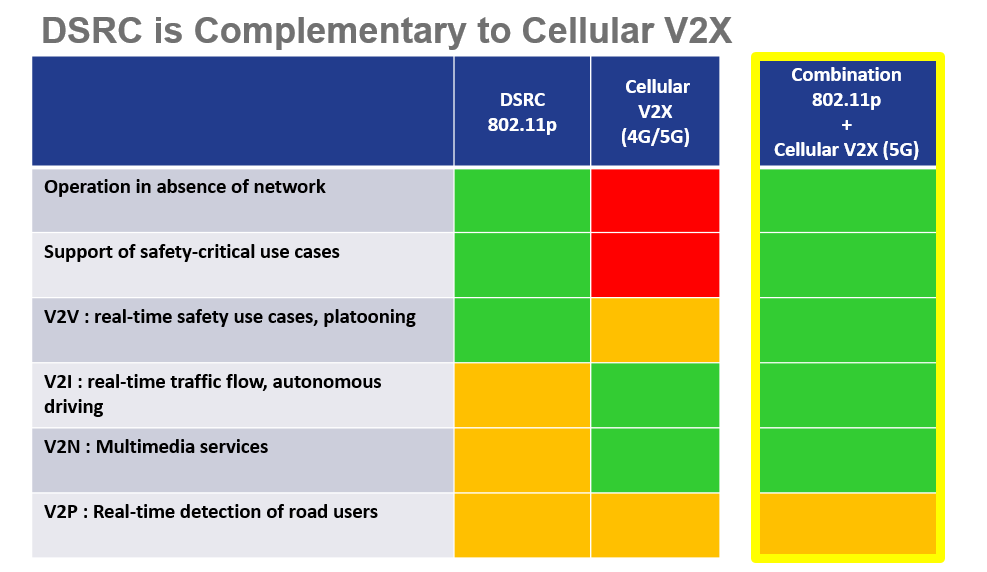
What’s Next
V2X is already
rolled out in cars
in the US and Japan, and we’ll see even more on the road soon. In the
U.S., safety was the key motivator for the United States Department of
Transport’s (USDOT) recent proposed rule to mandate that automakers
include Vehicle-to-Vehicle (V2V) technology in all new light-duty
vehicles. Many cities around the world are deploying road side units
using the 802.11p/DSRC standard.
NXP is recognized as a world leader in V2X technology, and we are proud to be
launching our next generation product, the world’s first scalable,
single-chip secure V2X modem.
As we look to the future, we envision scalable, smart telematics control units
(TCUs) inside the car, being built as hybrid “smart antenna”
architectures enabling wireless connectivity to pass in and out of the
connected car.

The smart antenna, a complete TCU module for the connected car, features:
- DSRC-based safety modem
-
Cellular 4G / 5G WAN
data pipe
- WiFi / LAN
- BT / PAN
- GPS
- SXF1800, secure hardware element
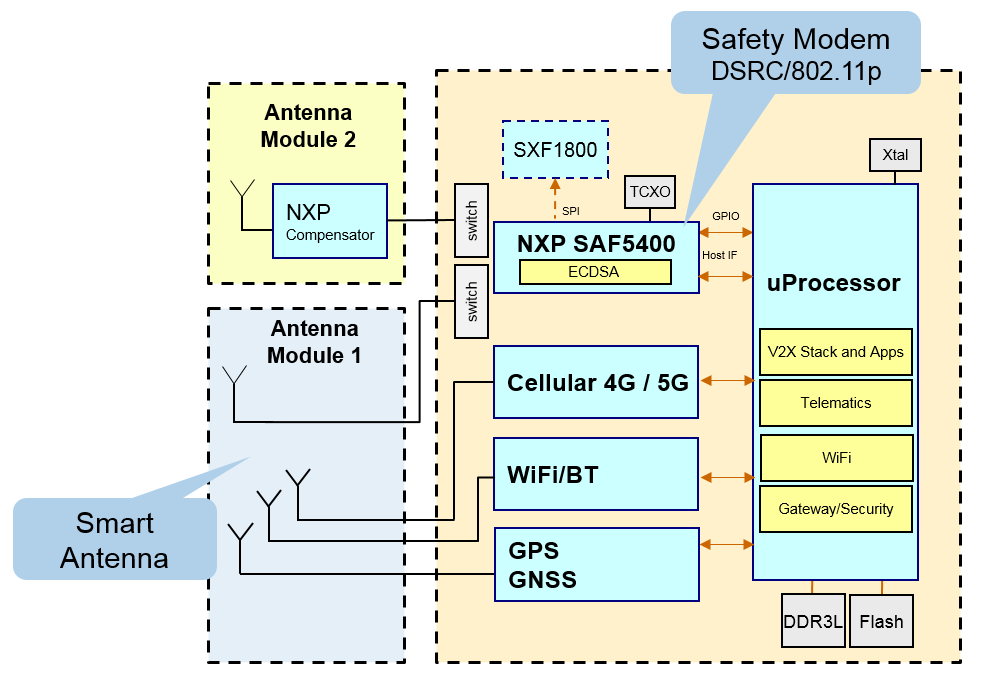
Get ready for a fast ramp up with more excitement to come as we drive further
down the road to fully connected cars!
Additional information:
NXP Launches World’s First Scalable, Single-Chip Secure Vehicle-to-X
Platform
Whitepaper: Why NXP DSRC/11p beats 5G
V2X is ready to go
Autonomous Trucks Powered by NXP Technology: European Truck Platooning
Challenge

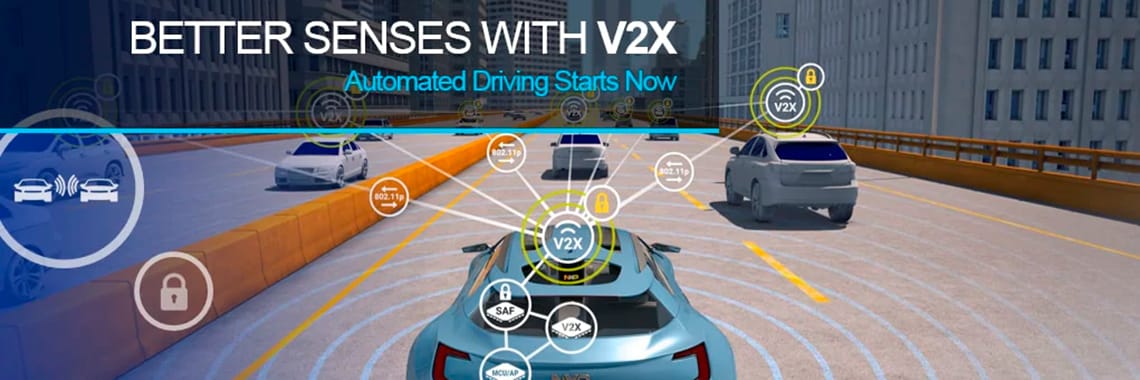
 With V2X, your car is alerted of roadway hazards that are impossible to see
in advance.
With V2X, your car is alerted of roadway hazards that are impossible to see
in advance.




